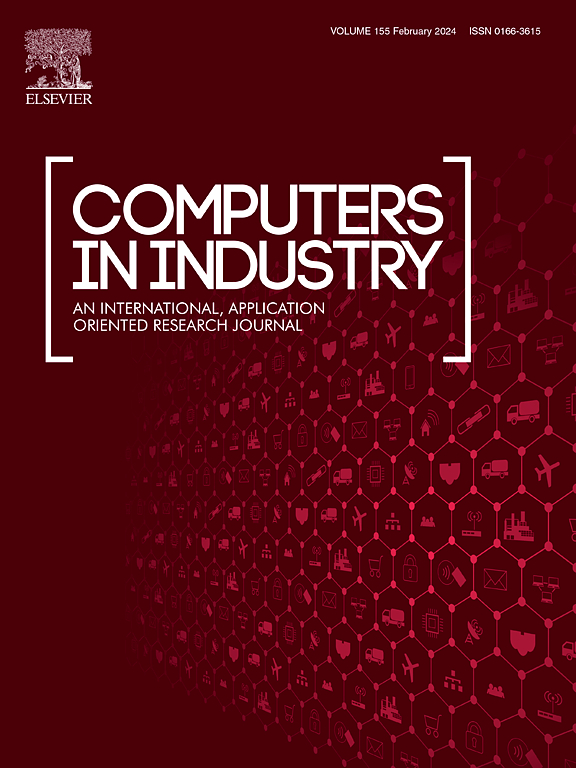基于增强型YOLOv8的路面损伤检测
IF 9.1
1区 计算机科学
Q1 COMPUTER SCIENCE, INTERDISCIPLINARY APPLICATIONS
引用次数: 0
摘要
道路损伤检测系统(RDDS)在智能交通网络中至关重要,可以提高驾驶安全性、舒适性和整体交通效率。影响系统性能的一个关键因素是底层检测算法的有效性。目前,YOLOv8算法在缺陷检测中得到了广泛的应用,但由于道路损伤的规模不同,该算法面临着挑战。具体而言,骨干网中的卷积下采样模块通常具有有限的接受域,降低了其捕获全局信息的能力,而多尺度特征融合网络可能会丢失关键的局部缺陷细节和深度位置信息。这些限制阻碍了YOLOv8检测路面缺陷的性能。为了解决这些问题,我们提出了一种基于上下文捕获和细颈结构的增强算法YOLOv8 (YOLOv8- ccs),该算法针对道路损伤检测中的多尺度缺陷特征和小尺度目标的普遍存在。为了克服有限的接受场并提高全局上下文感知,我们集成了一个增强的上下文引导模块下行采样组件(E-ContextGuidedBlock_Down),它扩展了接受场并改进了上下文捕获。此外,我们用Ghost Shuffle Convolution (GSConv)-Slimneck取代了现有的多尺度融合网络,并在特定层引入了基于vovnet的增强型Ghost Shuffle Cross Stage Partial (VoVGSCSP-E)模块。为了进一步增强特征提取和减少融合过程中的信息丢失,我们结合了内容感知特征重组(CARAFE)上采样模块和加权特征融合方法。最后,在骨干网和多尺度特征融合网络之间增加了多级上下文关注瓶颈(MLCABOT)模块,提高了网络的连通性和整体特征提取能力。在验证中,我们提出的方法在RDD-2022、ROAD-MAS和无人机沥青路面破损数据集(UAPD)数据集上的性能分别优于YOLOv8 3 %、4.7 %和3.8 %。在同类检测模型中F1得分最高,推理速度排名前三。这些结果突出了YOLOv8-CCS在实时道路损伤检测方面的潜力,为城市路面管理提供了更准确、更全面的解决方案。该系统配备了先进的检测算法,可以显著提高道路养护效率,增强驾驶安全性。本文章由计算机程序翻译,如有差异,请以英文原文为准。
Road surface damage detection based on enhanced YOLOv8
The Road Damage Detection System (RDDS) is crucial in intelligent transportation networks, enhancing driving safety, comfort, and overall traffic efficiency. A key factor in the system's performance is the effectiveness of the underlying detection algorithm. Currently, the YOLOv8 algorithm is widely applied in defect detection, but it faces challenges due to the varying scales of road damage. Specifically, the convolutional downsampling module in the backbone network often has a limited receptive field, reducing its ability to capture global information, while the multi-scale feature fusion network may lose critical local defect details and deep location information. These limitations hinder YOLOv8’s performance in detecting pavement defects. To address these issues, we propose an enhanced algorithm, YOLOv8 with Context Capture and Slimneck Structure (YOLOv8-CCS), which targets multi-scale defect characteristics and the prevalence of small-sized targets in road damage detection. To overcome the limited receptive field and improve global context awareness, we have integrated an enhanced context-guided module downsampling component (E-ContextGuidedBlock_Down), which expands the receptive field and improves context capture. Additionally, we replace the existing multi-scale fusion network with Ghost Shuffle Convolution (GSConv)-Slimneck and introduce the Enhanced VoVNet-based Ghost Shuffle Cross Stage Partial (VoVGSCSP-E) module in specific layers. To further enhance feature extraction and minimize information loss during fusion, we incorporate the Content-Aware ReAssembly of Features (CARAFE) upsampling module and a weighted feature fusion method. Finally, the Multi-Level Context Attention Bottleneck (MLCABOT) module is added between the backbone network and the multi-scale feature fusion network, improving the connectivity and overall feature extraction capability. In validation, our proposed method outperformed YOLOv8 by 3 %, 4.7 % and 3.8 % on the RDD-2022, ROAD-MAS and Unmanned Aerial Vehicle Asphalt Pavement Distress Dataset (UAPD) datasets, respectively. It also achieved the highest F1 score among comparable detection models and ranked among the top three in inference speed. These results highlight the potential of YOLOv8-CCS for real-time road damage detection, providing a more accurate and comprehensive solution for urban pavement management. Such a system, equipped with an advanced detection algorithm, can significantly improve road maintenance efficiency and enhance driving safety.
求助全文
通过发布文献求助,成功后即可免费获取论文全文。
去求助
来源期刊

Computers in Industry
工程技术-计算机:跨学科应用
CiteScore
18.90
自引率
8.00%
发文量
152
审稿时长
22 days
期刊介绍:
The objective of Computers in Industry is to present original, high-quality, application-oriented research papers that:
• Illuminate emerging trends and possibilities in the utilization of Information and Communication Technology in industry;
• Establish connections or integrations across various technology domains within the expansive realm of computer applications for industry;
• Foster connections or integrations across diverse application areas of ICT in industry.
 求助内容:
求助内容: 应助结果提醒方式:
应助结果提醒方式:


